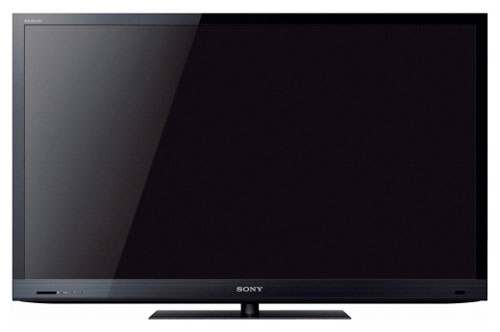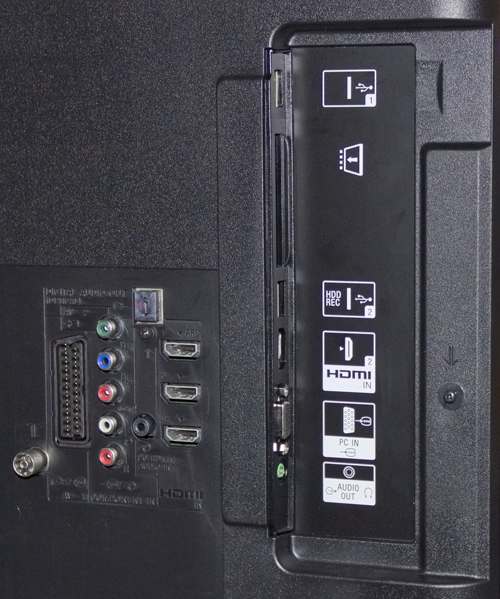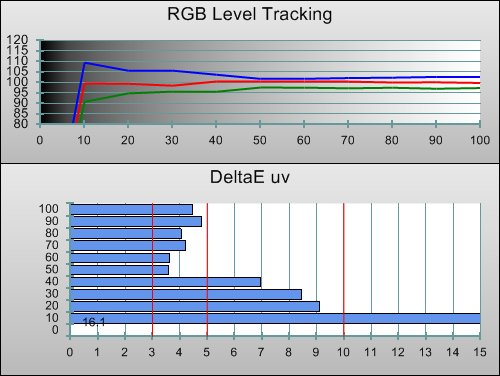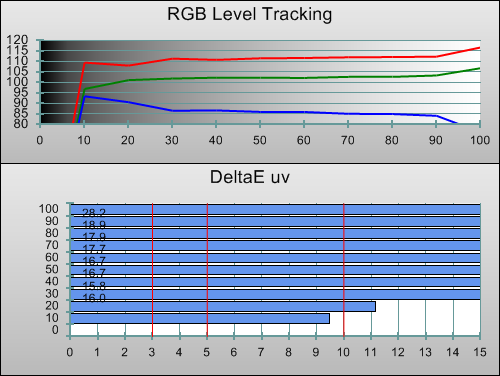Sony recently delivered a sample of its 40-inch HX723 BRAVIA LED LCD TV for review, hot on the heels of the top-end HX923. A quick glance over the specs suggests that the HX723 features many of the favourable attributes of that flagship television, but at around half the price. Not surprisingly, this KDL-40HX723 lacks the LED local dimming function which made the 923 so unique (which should result in contrast performance that we more commonly associate with standard LED LCD TVs), and features the lower-specced Motionflow XR 400 rather than the top-end XR 800 (we’ll see how big the difference is during the review). Also, unlike the HX923 the Sony KDL40HX723 doesn’t ship with any Skype webcam/microphone unit nor 3D glasses in the box.
<!-- google_ad_client = 'pub-2887677957235196'; google_ad_slot = '4990177225'; google_ad_width = 336; google_ad_height = 280; //-->
However, there are still 4 inputs, a Freeview HD tuner, 3D capability, and the sort of internet features that you’d expect a modern HDTV to have on its spec sheet. Let’s see how the Sony KDL-40HX723 competes against similarly priced LED LCD rivals…
Note: The specific model we tested was the Sony KDL40HX723BU, which denotes the 3-pin-plug UK version.
Jump To: Operation • Calibration • Picture Performance • Conclusion
Design is a very subjective thing, as is evidenced by the fact that we personally found the design of the Sony HX723 more appealing than the HX923. The reason? This cheaper LED TV includes a greyish, brushed steel finish below the LCD panel, which contrasts nicely with the black plastic that surround the other three edges (and surrounded the entire screen on the aforementioned higher-up model). It’s also worth mentioning that the LCD panel is “bare” on the KDL40HX723, rather than being covered in the sheet of “Gorilla Glass”, as on the 923.

The KDL-40HX723 fits easily to the supplied tabletop stand assembly, which is styled in black, with a brushed steel appearance.
Not surprisingly for a modern HDTV, the Sony KDL40HX723’s notable inputs include 4 HDMIs, the mandatory analogue Component input, an input to which SCART devices can be connected to with a break-out adapter cable, a feed for its Freeview HD tuner (which also accepts cable feeds, if you live in a country where your operator supports it), and a LAN input, which you’ll need to use in order to hook the TV up to the internet (unless you have a compatible USB Wireless accessory already).
 |
| Rear: 4 x HDMI, VGA, Component, SCART, aerial, ethernet & audio outs |
None of the major brands has ever put on an HDTV with a truly bad user interface, so unsurprisingly, there’s little to say in this area. Sony’s menus have undergone some partial redesigns over the years, and the current implementation is basically a new front end with older menus lurking underneath. The design feels a little inconsistent as a result, but that’s a very minor complaint… the menus feature clear, legible fonts and are fairly well laid out.
![[Picture] menu](https://www.hdtvtest.co.uk/news/wp-content/uploads/2018/04/hdtv_Sony-KDL40HX723_menu2.jpg) |
| [Picture] menu |
There’s a good amount of picture options available, which should let us adjust the Sony KDL-40HX723’s images, should it be committing any image inaccuracy sins in its default “Cinema” mode. Most importantly, control over the Motionflow system is given, which should allow us to achieve an appropriate balance between motion clarity and processing artefacts (even the best MCFI-assisted LCD TVs have them). Unsurprisingly, but still disappointingly, there is no advanced colour controls on the KDL40HX723BU, as is the case with all of Sony’s lineup this year.
Note: Our Sony KDL-40HX723 review sample was calibrated using Calman Professional, the industry-leading video calibration software.
Prior to taking any measurements from the Sony KDL-40HX723, we used our prior experience to set the TV up to give it the best “fighting chance” of producing an accurate picture. In other words, we selected the “Cinema” scene mode and the “Cinema1” picture preset, then shut off any unwanted processing (Advanced Contrast Enhancer, etc.) for a “hands off” picture.
 |
| Pre-calibration RGB tracking and delta errors (dEs) |
In this mode, the Sony KDL-40HX723 was doing a good job of presenting tint-free Grey shades (when judged by “out of the box” standards). Because the components in each panel – such as the sidelighting, the light guide plates, and the colour filters – vary from unit to unit, it’s not really commercially practical for manufacturers to provide a perfectly coloured picture out of the box. For users who won’t be calibrating their TVs – and as enthusiasts who calibrate TVs on a day to day basis, it’s important for us to remember that that’s nearly everyone – the Sony KDL-40HX723 does a very good job. However, it suffers from the common LED LCD flaw of featuring slightly frosty, blue-tinted shadows.
![Post-calibration RGB Tracking in [Cinema 1] mode](https://www.hdtvtest.co.uk/news/wp-content/uploads/2018/04/hdtv_Sony-KDL40HX723_post-rgb.png) |
| Post-calibration RGB tracking and dEs in [Cinema 1] mode |
Cleaning this up was a cinch with the [White Balance] menu, though. The KDL-40HX723 also suffers from the lack of precision in the low-end adjustments that we noted on the HX923 model, which is why we couldn’t get a completely flat, tint-free result at the 10% and 20% brightness levels (far left of the chart). We do think that Sony should also catch up with other manufacturers, who are typically providing more specific 10-point White Balance adjustments on similarly-priced screens (or in the case of the Korean brands, on lesser-priced ones, too).
![Gamma curve in [Cinema 1] mode](https://www.hdtvtest.co.uk/news/wp-content/uploads/2018/04/hdtv_Sony-KDL40HX723_post-gamma.png) | |
| Gamma curve in [Cinema 1] mode | Corresponding gamma tracking |
Most Sony HDTVs we’ve reviewed lately have done very well with Gamma, and the KDL40HX723 was no exception. We didn’t have to make any adjustments (beyond our usual Greyscale tracking) to achieve the above, highly linear result: the level of brightness at each level was very, very close to perfection. As a result of its highly accurate Gamma tracking, the Sony KDL-40HX723’s images appear free of TV-added contouring artefacts and a sense of believability.
Sony still doesn’t offer any advanced colour controls on any of its screens – there’s an arbitrary [Live Colour] feature which simply exaggerates the brightness of the colours, and the basic [Colour] and [Tint] controls. Fortunately, the KDL40HX723 doesn’t really suffer from this ommission, with all colours being suitably accurate. Most notably, Blue is a little bit desaturated, which is something we commonly see with edge-lit LED LCD televisions.
![Post-calibration CIE chart in [Cinema 1] mode](https://www.hdtvtest.co.uk/news/wp-content/uploads/2018/04/hdtv_Sony-KDL40HX723_post-cie.jpg) |
| Post-calibration CIE chart with reference to HD Rec.709 |
![Post-calibration Luminance levels in [Cinema 1] mode](https://www.hdtvtest.co.uk/news/wp-content/uploads/2018/04/hdtv_Sony-KDL40HX723_post-colour-lum.png) |
| Post-calibration colour luminance (coloured bars = targets; black bars = measured values) |
Prior to advanced calibration of the KDL-40HX723’s 3D mode, we popped on the supplied Sony TDG-BR250 3D eyewear and used our basic 3D test patterns to adjust Brightness and Contrast – in other words, things which could be set by eye, and don’t require specialist measuring equipment. As in 2D mode, the Brightness was set slightly too high in the default position, revealing just a little bit of extra shadow detail (Sony’s glasses do cause a darkening of the image, but they don’t throw away shadow detail’s like Panasonic’s do). We reduced this by 2 clicks (to “48” from the default “50”), just as in 2D. [Contrast] also comes pre-configured at its maximum setting, which results in severe discolouration of in bright areas (we left this as-is for the pre-calibration measurements, so it will be visible at the end of the chart).
Afterwards, we attached the 3D glasses to the front of our Klein K-10 meter to gather some data on the Sony KDL40HX723BU’s 3D capabilities.
 |
| 3D Pre-calibration RGB tracking and delta errors (dEs) |
As we witnessed by eye, the high default [Contrast] setting results in blue “running out” towards the end of the Greyscale – or in plain English, colour tinting being visible in bright areas (reducing this to “80” from the default Max – or in other words, “100” cured the discolouration). We understand why Sony would configure the 3DTV in this way; with the darkening effect of the 3D eyewear, we can see why they would want to pump out as much light as they possibly could from the TV. However, reducing Contrast results in greater dynamic range with less colour tinting, with only a minimal trade-off in light output. Asides from this, Greyscale tracking was good for an uncalibrated 3D TV, something which is important given the scarcity of 3D calibration practices and equipment. The image had a red tint overall, although as we always point out, because the tint is consistent across all brightness levels, it’s much more easier to “tune out” mentally. However, neither this, nor the KDL-46HX923 we reviewed recently, have had out-of-the-box Greyscale tracking that’s as good as some of the previous Sony 3D televisions. This could be a total coincidence, though, since this is dependent not only on the screen itself, but also on the 3D glasses being used.
![3D Post-calibration RGB Tracking in [Cinema 1] mode](https://www.hdtvtest.co.uk/news/wp-content/uploads/2018/04/hdtv_Sony-KDL40HX723_3d-post-rgb.png) |
| 3D Post-calibration RGB tracking and dEs in [Cinema 1] mode |
Calibration was easy and the results were impressive, resulting in much more accurate grey shades. The effects of 3D calibration never cease to put a smile on our faces: after watching the first-generation 3D displays which didn’t do well with Greyscale neutrality at all, it’s actually quite novel to watch a 3D image which is coloured almost the same as a 2D one. The only remaining trouble worth mentioning is with Sony’s 3D glasses themselves. Moreso than with other brands, tilting your head to one side will result in the picture gaining a new colour tint. There’s nothing we can do about this, but during calibration we made sure to align the calibration meter and glasses as evenly as possible.
![3D Post-calibration CIE chart in [Cinema 1] mode](https://www.hdtvtest.co.uk/news/wp-content/uploads/2018/04/hdtv_Sony-KDL40HX723_3d-post-cie.jpg) |
| 3D Post-calibration CIE chart with reference to HD Rec.709 |
![3D Post-calibration Luminance levels in [Cinema 1] mode](https://www.hdtvtest.co.uk/news/wp-content/uploads/2018/04/hdtv_Sony-KDL40HX723_3d-post-colour-lum.png) |
| 3D Post-calibration colour luminance (coloured bars = targets; black bars = measured values) |
Colour accuracy was good in 3D mode, although all of the colours were very mildly skewed towards green when compared to 2D (compare the two CIE charts and you’ll see that the triangle indicating the gamut moves upwards). We adjusted the [Tint] control two clicks to the right to further improve the hue accuracy of magenta, cyan and yellow. Frankly speaking, it was difficult to criticise the colour accuracy either before or after calibration. While it’s easy enough for our trained eyes to spot 3D-imposed colour tints in areas of the screen we know are supposed to be neutral white, pinpointing colour reproduction inaccuracies is difficult – especially given how much 3D content is animated. That’s not to say that colour accuracy isn’t important for animated material, but rather that we’re without much in the way of real-world reference. (The same could be argued for live-action films with stylised colour, of course).
| Dead pixels | None |
| Screen uniformity | Some brightness differentiation; no tints |
| Overscanning on HDMI | 0% with “Full Pixel” turned on |
| Blacker than black | Passed |
| Calibrated black level (black screen) | 0 cd/m2 (LEDs turn off) |
| Calibrated black level (ANSI checkerboard) | 0.054 cd/m2 |
| Black level retention | Stable with [Advanced Contrast Enhancer] off – except for auto-dimming with full black screen |
| Primary chromaticity | Very Good |
| Scaling | Very Good |
| Video mode deinterlacing | Excellent jaggies reduction |
| Film mode deinterlacing | Passed 2-2 PAL and 3-2 NTSC tests in SD and HD |
| Viewing angle | Excellent for an LCD TV |
| Motion resolution | 1080 with [Motionflow]: “Clear” |
| Digital noise reduction | Optional |
| Sharpness | Defeatable edge enhancement |
| Luma/Chroma bandwidth (2D Blu-ray) | Full Luma, horizontally blurred chroma except in “Game” and “Graphics” modes |
| 1080p/24 capability | No judder in 2D or 3D |
| Input lag | 31ms compared to lag-free CRT |
| Full 4:4:4 reproduction (PC) | Yes, in “Game” and “Graphics” modes |
| Default [Auto] mode (2D) | 64 watts |
| Default [Auto] mode (3D) | 79 watts |
| Calibrated [Cinema 1] mode (2D) | 53 watts |
| Calibrated [Cinema 1] mode (3D) | 79 watts |
| Standby | 1 watt |
Measurements taken with full 50% grey screen.
Like most modern LCD-based HDTVs, the Sony KDL-40HX723 shuts its LED lighting off entirely when fed a fully black video signal, which means that trying to measure black level this way will return a measurement of 0 cd/m2 (total black). This is of no use for assessing how black the blacks will look when watching actual video material, though – for that, we use a more gruelling test.
We measured the KDL40HX723 using the ANSI checkerboard test pattern, which divides the screen into black and white squares (and therefore bypasses any sort of auto-dimming). We weren’t surprised that in this case, the black patch in the middle of the pattern measured at just a hairline over 0.05 cd/m2, which is the same result we got from the top-end Sony HX923. This is dark enough to give a good impression of black depth, although it’s not cutting edge.
The KDL-40HX723 also features an [LED Dynamic Control], which implements local dimming to the best of this edge-lit LCD TV’s ability. Unlike the HX923 model, the Sony KDL40HX723 can only shut off columns on the panel. For example, a screen that’s fully black except for a flickering candle in the middle of the screen will display with perfectly black edges, but with a greyer strip approximately surrounding the lit area. We didn’t find this limitation too annoying, but users who do can shut the [LED Dynamic Control] off entirely to have the KDL-40HX723 act more like a traditional CCFL backlit display and keep the screen illumination consistent.
Often, we use the “Clear Plus” [Motionflow] setting on Sony’s televisions, which appears to implement a higher level of backlight scanning (or perhaps some other trick to improve perceived motion resolution) in exchange for a slightly darker image. On the KDL-40HX723, we decided not to, since the highest level of brightness we could get out of the LED LCD TV in “Clear Plus” was around 110 cd/m2. Instead, we opted for “Clear”, which still returns all 1080 lines from the FPD Benchmark Software disc’s scrolling resolution test chart.
As with the KDL-46HX923, the Sony KDL40HX723BU has some form of motion interpolation working at all times when the [Motionflow] modes are enabled. That might sound obvious, but what we mean is that there is no option like on Samsung’s HDTV displays which allow the De-blur and De-judder elements of the system to be independently controlled. In any case, we didn’t see any motion glitches or obvious “soap opera effect” during films provided we set [Film Mode] to “Auto1” (using “Auto2” or “Off” did reveal glitches). A good indication of this is the beginning of Chapter 5 on the Tron: Legacy BD, where Sam Flynn runs out into the virtual world of the grid for the first time. Using any mode other than “Auto1” results in the white lights shredding as the camera does a 360° spin around him.
Motion clarity during video content was good, and was basically what we expected from a higher-end LCD.
We first of all decided to test the Sony KDL-40HX723 with motion in 3D. Many 3D TVs use 60hz-centric designs which fail to properly reproduce the full gamut of frame rates that European consumers will encounter. The good news is that the Sony KDL40HX723 is not one of them, and that it reproduced 50hz video, 50hz film, 60hz video, and 24fps film frame rates in 3D without any problems. The only condition is that the [Motionflow] system is turned Off; otherwise juddering will occur.
There are also no problems with resolution. The Sony KDL-40HX723 reproduces all 1080 lines from the 3D HD source without any blurring or other distortion. In fact, the Japanese firm is one of the only manufacturers who have been consistently and completely accurate when they promise “Full HD 3D” – although we haven’t seen many of their cheaper 3D TVs, so there is always the possibility that a nasty surprise is hiding further down the range. (Excuse us for being a little cynical, but it’s our job!)
With these pre-flight checks out of the way, we then had a subjective look at the Sony KDL-40HX723 displaying some actual 3D content. Sony’s own Cloudy With A Chance of Meatballs, a welcome break from the Dreamworks animated films that Samsung championed, was hugely involving both before and after calibration. Other 3D test content was also fairly impressive, although there is still some crosstalk present at times. All in all, we were impressed with the overall 3D experience on the Sony KDL40HX723 thanks to the neutral, tint-free image, sufficient brightness, lack of motion judder/stutter, and the full resolution on offer.
The Sony KDL40HX723BU didn’t disappoint when it came to standard definition processing. Scaling was good, although it didn’t conceal aliasing in the same way that Samsung’s similar HDTVs do (they’re unique in that regard, though). Diagonal interpolation processing worked brilliantly, concealing jaggies with standard-def TV very effectively (Sony Bravias lagged behind in this area at one point in the past, but no longer).
We were also delighted to see that, just like its more expensive sibling, the HX923, the KDL-40HX723 had no problem at all adjusting its video processing when faced with Film content transferred to PAL (European) video. If a TV (or DVD player) fails to do this correctly, jaggies appear in areas of fine detail. Fortunately, that’s not a problem with the Sony KDL-40HX723, which produces an uncompromised image when faced with PAL film content – good news for anyone watching movies on SD TV, or from an older non-upscaling DVD player.
The Bravia KDL-40HX723 performed brilliantly when we fed it our stack of favoured Blu-ray Disc movies. Sony has historically been very attentive to making sure that 24fps film content plays back properly on its televisions, so we weren’t surprised to see the KDL40HX723 portraying movies with essentially perfect motion: no “false motion” being generated by the TV, and no unwanted juddering, either. (Remember, our motion interpolation detection test did reveal that the HX723 isn’t COMPLETELY leaving the image alone, but we never spotted motion glitches appearing with real film content… however, the option to turn Motionflow off entirely is always available, just in case).
Watching 2.35:1 letterboxed movies in the dark did reveal some pools of light visible, especially near the corners, where the LEDs themselves are located. This is pretty much par for the course with edge LED LCDs, though, and is an example of the ultra-slim design imposing negative effects upon the picture quality. This was basically the only down-side, though: the highly accurate Greyscale, Gamma and Colour qualities of the Sony KDL-40HX723 allowed for the unhindered representation of films.
The LCD panel held up well when viewed from the sides. Although there’s no such thing as an LCD TV without viewing angle distortion, the Sony KDL40HX723 is definitely one of the better examples, and we think it compares very favourably to the IPS panels used in Panasonic and LG LCD TVs in this regard (it also has the advantage of not suffering from IPS’ poorer black levels). Although the best seat in the house will always be dead centre with LCD, viewing the Sony KDL-40HX723 from the sides only resulted in a slight loss of contrast performance, with little in the way of colour tinting or loss of saturation.
Using the “Game” scene mode, we clocked game mode at 31ms, which is exactly what we measured from the HX923 model. This is enough to give a decent gaming experience, but for hardcore gamers who are used to playing games requiring fast reflexes, it’ll be teetering on the right side of acceptability. We can certainly feel the difference compared to a display with 16 or even 24ms of lag, for example, although this is highly dependent on the individual, and the Bravia KDL-40HX723 still provides a good gaming experience.
The Sony KDL-40HX723 is priced alongside rivals such as the Panasonic TX-P42VT30 Plasma and Samsung’s UE40D8000 LED TV, and ultimately it does a good job in fighting its own corner. Although it doesn’t have the overall contrast performance of the Panasonic Plasma, or the advanced picture setup controls of the Samsung, the KDL40HX723 is the only 3D TV out of these three which manages to both reproduce all 1080 lines of the HD 3D image (the Panasonic 42VT30 doesn’t), and deliver judder-free motion at all times (that rules the Samsung D8000 out).
The Sony KDL-40HX723 shares many of the same strengths as the considerably more expensive HX923 step-up model (advanced local dimming notwithstanding), but does so at a considerably reduced price point – although it’s still a 4-figure TV. As such, we definitely recommend it on the basis of its good image accuracy and ability to show any type of content without motion judder errors (something that some HDTV displays still struggle with). Only some good (rather than great) black levels and slight screen uniformity issues prevent us from Highly Recommending it.

<!-- google_ad_client = 'pub-2887677957235196'; google_ad_slot = '0693194791'; google_ad_width = 336; google_ad_height = 280; //-->